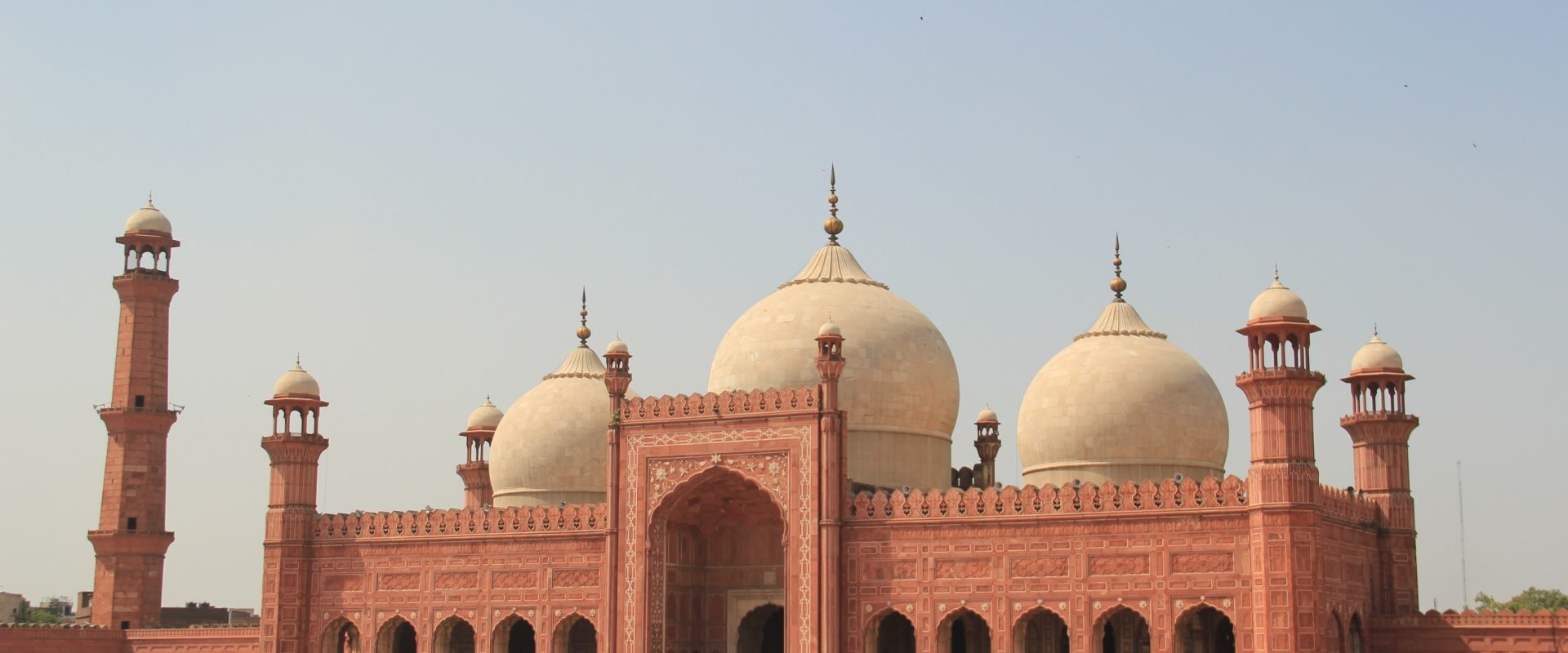
Badshahi Mosque
The Badshahi Mosque is an iconic Mughal-era congregational mosque in Lahore, capital of the Pakistani province of Punjab. The mosque is located opposite of Lahore Fort in the outskirts of the Walled City and is widely considered to be one of Lahore’s most iconic landmarks.
The Badshahi Mosque was built between 1671 and 1673 and by the Mughal emperor Aurangzeb. The mosque is an important example of Mughal architecture, with an exterior that is decorated with carved red sandstone with marble inlay. It remains the largest mosque of the Mughal-era, and is the third-largest mosque in Pakistan. In 1799, during the rule of Ranjit Singh of the Sikh Empire, the mosque’s courtyard was used as a stable and its hujras (cells) as soldiers quarters. When the British Empire took control of Lahore in 1846 it was used as a garrison until 1852. Subsequently, the Badshahi Mosque Authority was established to oversee its restoration as a place of worship. It is now one of Pakistan’s most iconic sights.
The sixth Mughal emperor, Aurangzeb, chose Lahore as the site for his new mosque. Aurangzeb, unlike the previous emperors, was not a major patron of art and architecture and instead focused, during much of his reign, on various military conquests which added to the Mughal realm. The mosque was built to commemorate Aurangzeb’s military campaigns in southern India, in particular against the Maratha Emperor Shivaji. As a symbol of the mosque’s importance, it was built directly across from the Lahore Fort and its Alamgiri Gate, which was concurrently built by Aurangzeb during construction of the mosque.
The mosque was commissioned in 1671, with construction overseen by the Emperor’s foster brother, and Governor of Lahore, Muzaffar Hussein – also known by the name Fidai Khan Koka .After only two years of construction, the mosque was opened in 1673.
On 7 July 1799, the Sikh army of Ranjit Singh took control of Lahore. After the capture of the city, Maharaja Ranjit Singh used its vast courtyard as a stable for his army horses, and its 80 Hujras (small study rooms surrounding the courtyard) as quarters for his soldiers and as magazines for military stores. In 1818, he built a marble edifice in the Hazuri Bagh facing the mosque, known as the Hazuri Bagh Baradari, which he used as his official royal court of audience. Marble slabs for the baradari may have been plundered by the Sikhs from other monuments in Lahore. In 1839, after his death, construction of a samadhi in his memory was begun by his son and successor, Kharak Singh, at a site adjacent to the mosque.
During the First Anglo-Sikh War in 1841, Ranjit Singh’s son, Sher Singh, used the mosque’s large minarets for placement of zamburahs or light guns which were used to bombard the supporters of Chand Kaur, who had taken refuge in the besieged Lahore Fort. In one of these bombardments, the fort’s Diwan-e-Aam (Hall of Public Audience) was destroyed, but was subsequently rebuilt in the British era. During this time, Henri de La Rouche, a French cavalry officer employed in the army of Sher Singh, also used a tunnel connecting the Badshahi mosque to the Lahore fort to temporarily store gunpowder.

